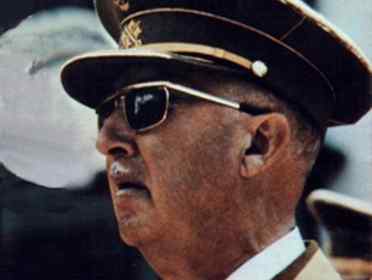Spanish Civil War Overview

The Opening Battle of World War II
The Spanish Civil War is often considered as “the opening battle of World War II“. The struggle between the Republicans and the rebel Nationalists witnessed introduction of the newest weaponry, most notably tanks and warplanes as well as intentional targeting of the civilian population for military purposes that also marked the bloodies military conflict in human history. However, Hitler and Stalin who entered World War II as allies were opponents in Spain. France and Great Britain, on the other hand, remained neutral and urged the other European states to do the same. For that reason some historians do not view the Spanish Civil War as “the opening battle of World War II”, while most of them also reject the epithet “the struggle between fascism and democracy“. The Nationalists led by General Franco were close to fascism but there was little democracy on the Republican side.
Causes of the Spanish Civil War
The events that provoked the Spanish Civil War can be traced back to the fall of the Spanish Monarchy in 1931. The newly elected Spanish government introduced major social reforms that directly hit the interests of the conservative forces, in the first place the aristocracy, the Catholic Church and the military yet failed to satisfy the radical left-wing political forces. Despite the rivalry, moderate and radical left-wing political organizations joined the Popular Front and won the 1936 election but their inability to restrict the violence of the radical leftists provoked an uprising of dissatisfied military officers who were soon joined by the rightist groups including the Spanish fascist party of Falange.
Rise of Francisco Franco
Military uprisings against the Republican government occurred throughout Spain and the Spanish Morocco in July of 1936. The leader of the revolt in the Spanish Morocco, General Francisco Franco managed to gain the support of the Nazi Germany which agreed to help him move the Army of Africa to Spain in September of 1936. Within a month, he was elected the Commander-in-Chief and the Head of State by the rebells who renamed themselves the Nationalists. Franco did not control the entire Spanish army nor commanded a homogenous group but he managed to unite the Nationalists both politically and military by spring of 1937. This enabled him to concentrate exclusively on military operations against his opponents who failed to achieve the unity comparable to that of the Nationalists. In addition, Franco was sent an Italian army corps of about 50,000 well trained men and a German aerial unit. The Republicans, on the other hand, could count only on the International Brigade consisting of foreign volunteers with little or no military experience.
Soviet Intervention in the Spanish Civil War
Francisco Largo Caballero who replaced Jose Giral as Prime Minister of Spain on September 4, 1936 reorganized the ineffective Republican forces into the People’s Army (Ejercito Popular) which, however, could not withstand the Nationalist forces which enjoyed the German and Italian military assistance. He turned for help to the Soviet Union which decided to intervene in the Spanish Civil War on the behalf of the Republican side. The Soviet weaponry helped the Republican government to halt the Nationalist advance but it increased the tensions between the left fractions which led to the Barcelona May Days, street battles between the communists and other fractions in the city Barcelona in May of 1937. In the same month, Caballero was replaced by Juan Negrin who urged the loyal groups to concentrate on fighting against the Franco’s Nationalists.
Defeat of the Republican Forces and End of the Spanish Civil War
General Franco, meanwhile, failed to split the Republicans on half and was decisively defeated in the Battle of Guadalajara in March of 1937. He achieved more success in 1938 when he finally managed to cut the Republican territory in two and pushed back the Republican offensive at the Ebro River by November of 1938. At the same time the Munich Agreement by which France and Britain accepted the annexation of Czechoslovakia’s region of Sudetenland by the Nazi Germany ended the hope of any anti-fascist aid from the West. The Republican forces in Catalonia collapsed and Barcelona fell to Franco in January 1939. Madrid and Valencia resisted until the end of March when the last Republican forces surrendered. The Spanish Civil War officially ended on April 1, 1939 when General Franco proclaimed victory on the radio.
Bombing of Guernica
The Spanish Civil War claimed about 500,000 lives, according to some estimations up to 1 million many of which were victims of both the Red Terror and White Terror referring to mass executions of political opponents by the Republican forces and Nationalists, respectively. Europe was shocked by the effects of the newest weapons and military strategies that included indiscriminate targeting of civilian areas, most notably the Bombing of Guernica by the Italian and German air forces on April 26, 1937. The event that inspired the Pablo Picasso’s anti-war painting named Guernica along with other horrors of the Spanish Civil War that became associated with fascist brutality might also played a role in the appeasement policy of France and Britain towards the Nazi Germany before the outbreak of World War II.




